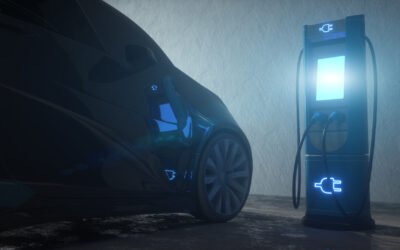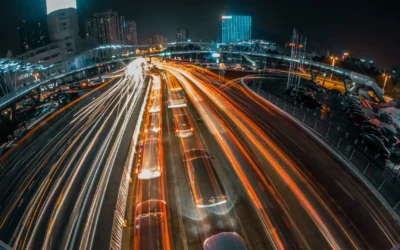• The world is finally attempting to move away from conventional sources of energy to greener energy sources. However, recent external shock may counteract this.
• The crises may also, in the longer run, push countries to adopt the alternative technologies at a much more rapid rate, being well aware of the consequences of relying heavily on conventional sources.
• One of the opportunities that the energy crisis has provided is the adoption and increased installations of roof-top solar. With countries facing issues in the imports of oil and gas, coupled with an acute energy shortage, this situation can be used as a measure to increase reliance on self- generated electricity.
With more and more countries announcing their ICE (Internal Combustion Engine) vehicle ban dates and GHG (Greenhouse Gas Emissions) reduction targets, the world is finally attempting to move away from conventional sources of energy to greener energy sources. However, with recent external shocks such as the Russia-Ukraine conflict and disruption issues in the supply chain of components, we have also witnessed an increase in energy prices as well as an increase in energy demand.
The prime example of these dire circumstances was seen in September, when California’s utilities had to call people to reduce their usage of electricity in order to manage the constraint on the grid. This included a request to not charge electric cars for a specific number of hours in order to prevent the overburdened grid from tripping. This incident happened just weeks after California announced its target to ban ICE vehicles by 2030.
The situation is not just dire in the U.S.; Europe is witnessing one of the worst energy crises in its history. After the start of the Russian-Ukrainian conflict, Europe has seen a growing energy crisis in the region. For most of the countries in Central Europe, Russia was a big source of energy, specifically natural gas. With the cut-off of this energy supply from Russia, the region has lost a big source of energy. At the same time, rising gas prices have triggered a soar in electricity prices, as well.
But is this going to permanently shift the course of the greener energy adoption and, ergo, halt the process of electrification? Even though this crisis certainly has the potential to slow down the rate of electrification for some years, it can also, in the longer run, push countries to adopt the alternative technologies at a much more rapid rate, being well aware of the consequences of relying heavily on conventional sources.
Some of the applications and use cases where there is potential for growth in renewables are detailed below:
Move Towards Off-the-Grid Solar Power
One of the opportunities that the energy crisis has provided is the adoption and increased installations of roof-top solar. With countries facing issues in the imports of oil and gas, coupled with an acute energy shortage, this situation can be used as a measure to increase reliance on self- generated electricity. Roof-top solar will not only help countries in decreasing their overall demand for electricity but can help strengthen the grid with supply of extra energy stored in car batteries or storage units to grid, in the event of a spike in demand. The EU commission also plans on making solar panels mandatory for commercial and public buildings by 2025 and for residential units by 2029.
There are many countries that have subsidized the installation of residential solar in order to encourage this. In Italy, the “Super Bonus” was extended till the end of 2022, giving up to 110% reimbursement for the costs of PV installation projects. Based on the incentives, grants, and targets for PV systems and smart chargers, according to PTR’s analysis, the growth rate of PV integrable smart chargers in some European countries will be as following:

Increase in Residential Charging Infrastructure
Because the problem of increased electricity prices will be somewhat addressed by the increased installations of PV systems, this will provide a great opportunity for people to keep their interest in investing in EV technology. In fact, EV batteries also double up as being able to operate as a storage unit; with the advancements in V2G technology, residential charging infrastructure also has the potential to witness a boom in the coming years.
Looking Ahead
Although the current energy crisis paints a grim picture of the future of energy generation, it can act as a stimulant in accelerating the growth towards greener independent sources of energy. Thus, it will serve to power an increase in residential charging infrastructure, as well.
EV Charging Infrastructure Service Overview
The research presented in this article is from PTR's EV Charging Infrastructure market research. For information about this service please submit a request shown below.
Contact Sales:
Europe
+49-89-12250950
Americas
+1 408-604-0522
Japan
+81-80-7808-1378
GCC/Rest of APAC
+971-58-1602441
More about our:
EV Charging Infrastructure Market Research
Recent Insights
Exploring the European EVCI Services Market Key Players and Emerging Trends
There has been a significant surge in the development of EVCI due to the widespread adoption of EVs in Europe. By 2030, it is expected that Europe...
Nordics EVCI Market Comparison: Quarterly Growth and Market Dynamics – 2024
This infographic examines the ambitious policies and regional targets that are propelling the growth of Electric Vehicle Charging Infrastructure...
Electrifying Future: Emerging Trends and Strategic Targets in the Middle East
This infographic presents an overview of the burgeoning electric vehicle (EV) market in the Middle East. It highlights the region's ambitious...


